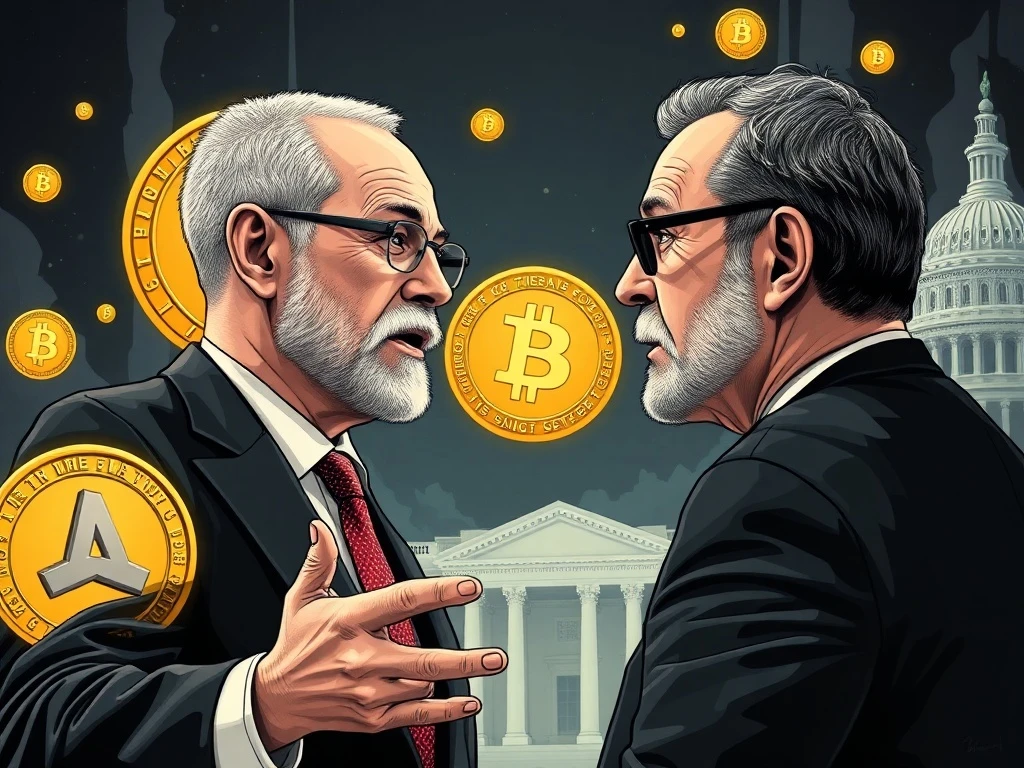Peter Schiff Sparks Controversy: Do Stablecoins Really Hurt Treasury Demand?

Renowned economist Peter Schiff has ignited a fiery debate about the role of stablecoins in the U.S. Treasury market. His bold claims challenge the widely held belief that stablecoins support government debt—instead, he warns they could disrupt bond yields and liquidity. What does this mean for crypto investors and traditional markets? Let’s break it down.
Peter Schiff’s Bold Stance: Stablecoins Don’t Boost Treasury Demand
Schiff argues that stablecoins merely redistribute existing capital rather than generating new demand for U.S. Treasury bonds. Here’s his reasoning:
- No New Liquidity: Stablecoins don’t create fresh capital; they shift funds already in the financial system.
- Bond Market Disruption: This reallocation could imbalance supply and demand, pushing long-term yields higher.
- Mortgage Rate Risks: Rising Treasury yields might indirectly increase borrowing costs, affecting homeowners.
Counterarguments: Do Stablecoins Actually Support Treasuries?
Critics of Schiff’s view point to scenarios where stablecoins indirectly bolster Treasury demand:
- Foreign Investment: A foreign buyer purchasing USDC requires the issuer to hold Treasuries as collateral.
- Digital Dollar Demand: Stablecoins act as a bridge for global dollar access, potentially increasing Treasury holdings.
Market Reactions: Rising Yields and Crypto Volatility
As Treasury yields climb, investors are reassessing risk:
- Shift to Safety: Some traders move from volatile cryptos like Chainlink to stablecoins or bonds.
- Sentiment Swings: Tools like the Trump Fear and Greed Index show stablecoins facing selling pressure in a ‘greedy’ market.
Regulatory Crossroads: The Future of Stablecoins
With stablecoins gaining traction in DeFi and payments, regulators are stepping in:
- Clarity Needed: Clear rules could stabilize their role in financial systems.
- Balanced Approach: Overregulation might stifle innovation, while underregulation risks instability.
Conclusion: A High-Stakes Debate
Schiff’s warnings highlight the complex interplay between crypto and traditional finance. Whether stablecoins help or hurt Treasury demand remains contested—but one thing is clear: their growing influence demands attention from investors and policymakers alike.
Frequently Asked Questions (FAQs)
1. Why does Peter Schiff believe stablecoins don’t support Treasury demand?
Schiff argues stablecoins recycle existing capital rather than generating new demand for bonds.
2. How could stablecoins indirectly increase Treasury purchases?
Issuers like Circle hold Treasuries to back stablecoins like USDC, creating demand when users buy them.
3. What’s the link between Treasury yields and crypto markets?
Higher yields often drive investors toward safer assets, reducing appetite for volatile cryptos.
4. Are stablecoins facing regulatory scrutiny?
Yes, governments are evaluating frameworks to manage their role in payments and DeFi.








